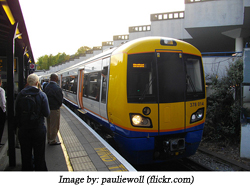|
London Overground - Keeping the Capital Running
London Overground is the main rail network other than the famous underground system and is run by Transport for London. This extensive network of lines and links covers no fewer than 20 London Boroughs. The network has recently undergone a multi million pound revamp that brought the system into the modern era, and utilises lines that have been in existence for many decades. Development is ongoing and it is intended that a third of people in London will be within quarter of an hour’s walk of a London Overground station when the network is finally completed. This major investment in the London transport network is a vital part of keeping the capital city working and mobile, and along with the Underground system this is the easiest way of getting around in London. Transport for London not only runs the London Overground network but also manages many other bus networks, river transfers, road routes and more, and is an integrated operator committed to the efficient running of the transport system in one of the world’s busiest cities. Serving the CityThe extensive nature of the London Overground network means it covers all of the major commercial and tourist destinations. This is a rail network that connects along the way with other Transport for London run solutions and offers the very best way of getting about London. Connections with the Underground Network, the Docklands Light Railway and the river transfers make it a well used system that is pushed to capacity. In summary, the routes include one that begins at North Watford and traverses the city from West to East, with stations at Ilford and Barking to the east. A branch in the centre of London takes passengers to the City of London itself and as far south as Beckenham, while other lines include a trunk to the pretty town of Richmond. London’s major attractions - the Houses of Parliament, Tower Bridge and the Tower of London for example - can all be reached by using the London Overground network from just about anywhere in the region, and many areas that are not served by rail have bus services that connect in order to complete the journey. The London Overground network will also play a major part in taking passengers across the city to the 2012 Olympic destinations, and there are plans in progress to complete an orbital route around the city as soon as possible in order to ease congestion within the city. The company has worked hard to improve rolling stock and run a more efficient timetable, and the changes have been noticed by commuters using the network. Online Booking at London OvergroundAs part of the Transport for London network London Overground is incorporated into that website - see www.tfl.gov.uk - and here you can use the simple online booking service to book tickets for the rail network. The website encourages the use of the popular Oyster card, a convenient top up system that allows users to pay as they go on all Transport for London services. The website offers excellent advice on discounts for National Railcard holders, students and the elderly, war veterans and also includes booking options for buses, trams and other interconnecting networks including the Docklands Light Railway and the Tube network. The Oyster Card method is a much advised one for visitors to the city, and there plenty of information about what to see and how to get there.
Return To "Train Operating Companies" Page From "London Overground" Page |